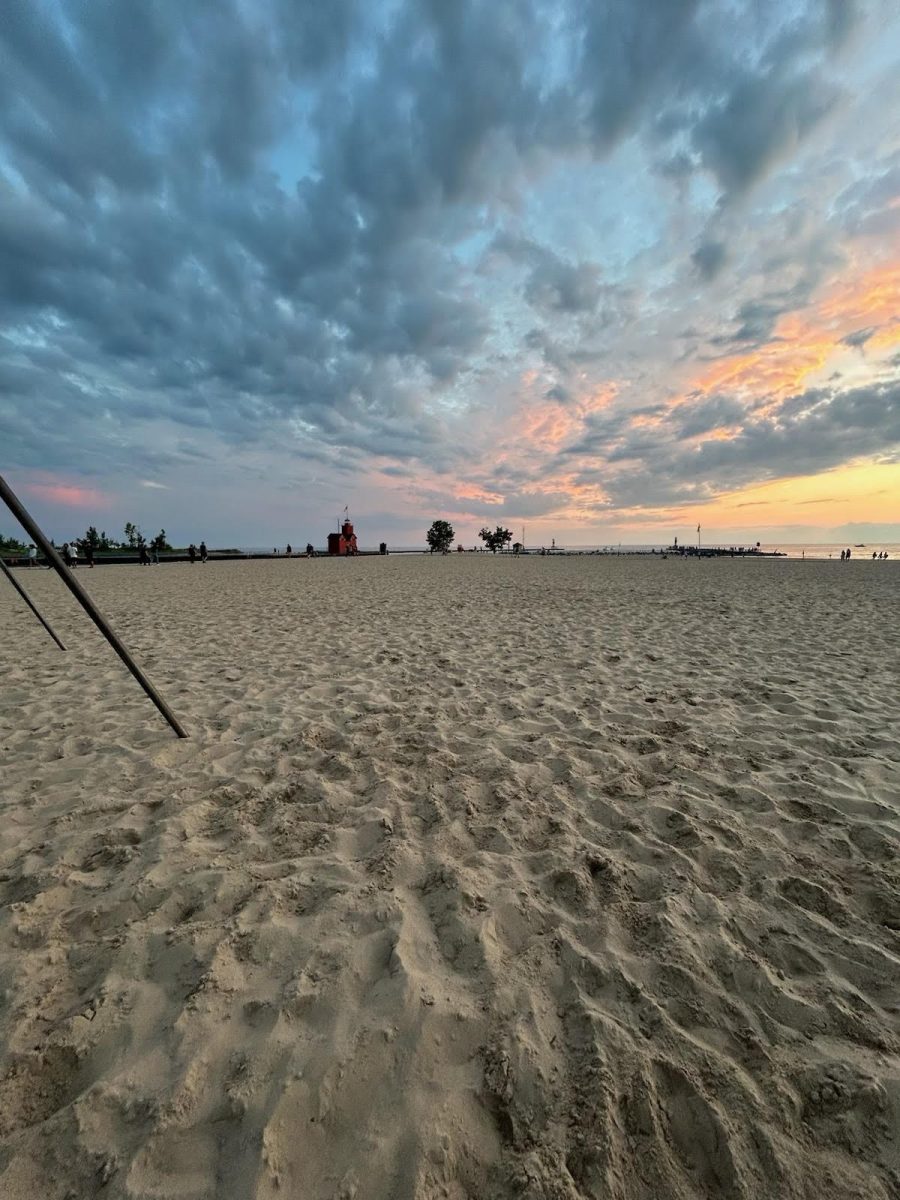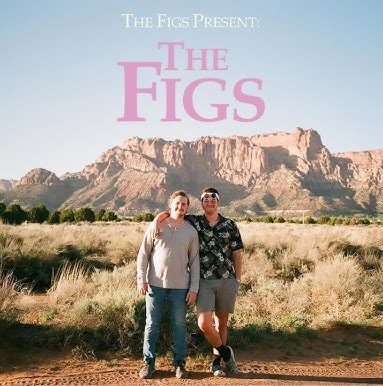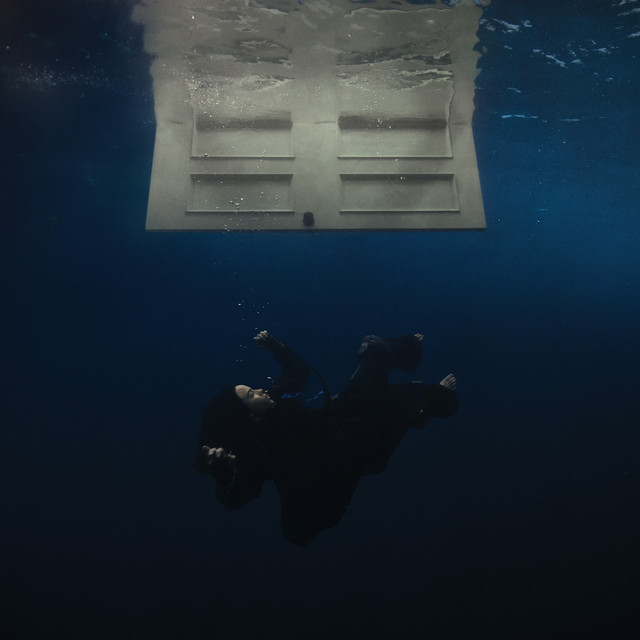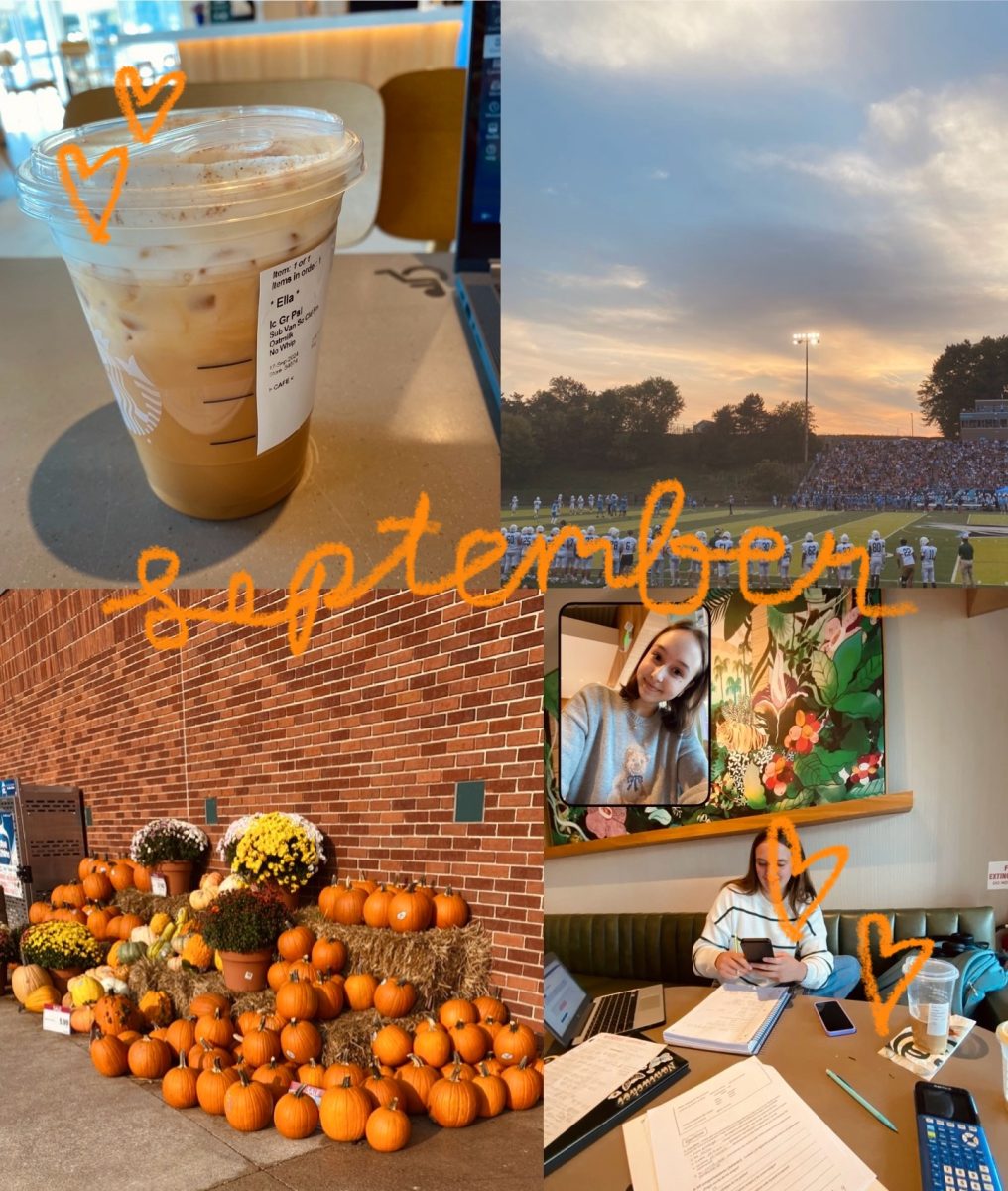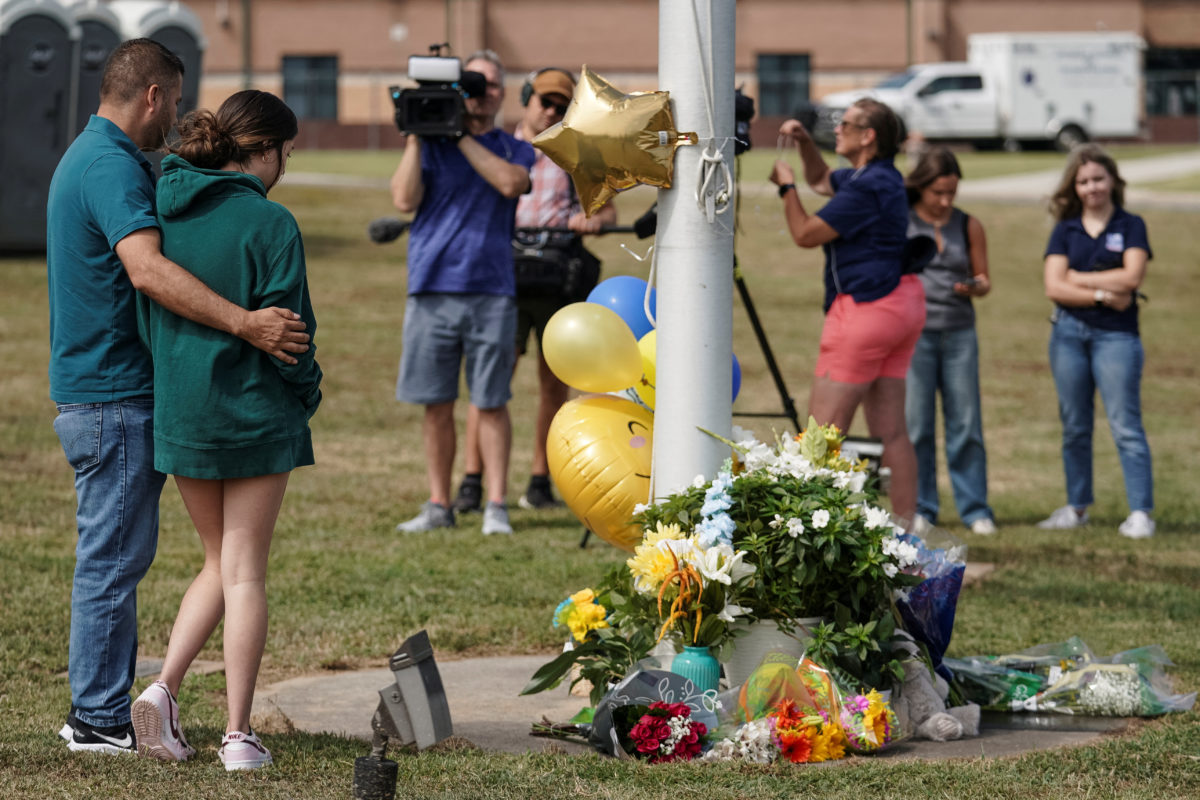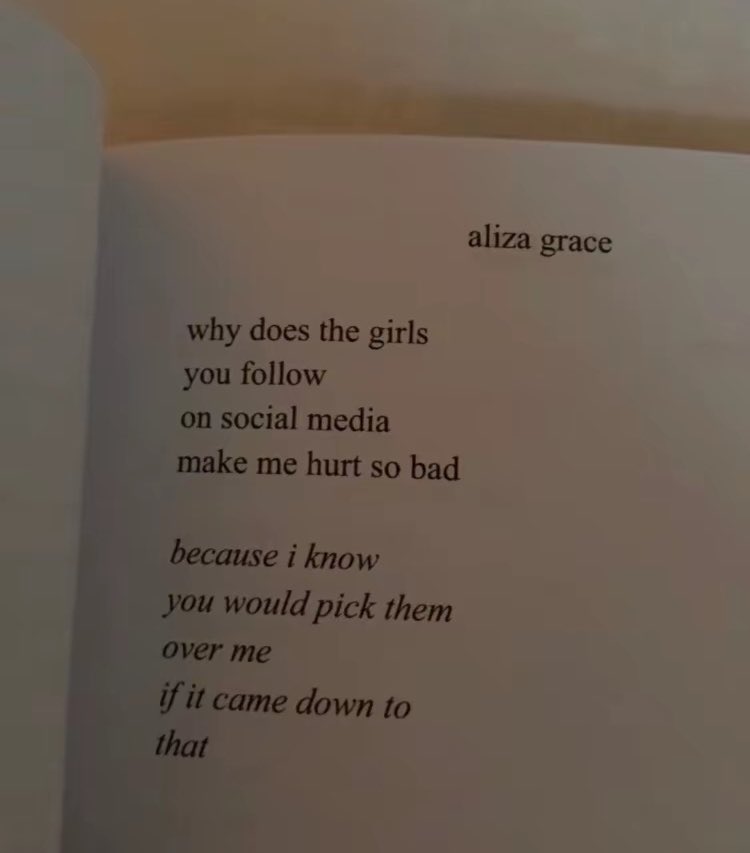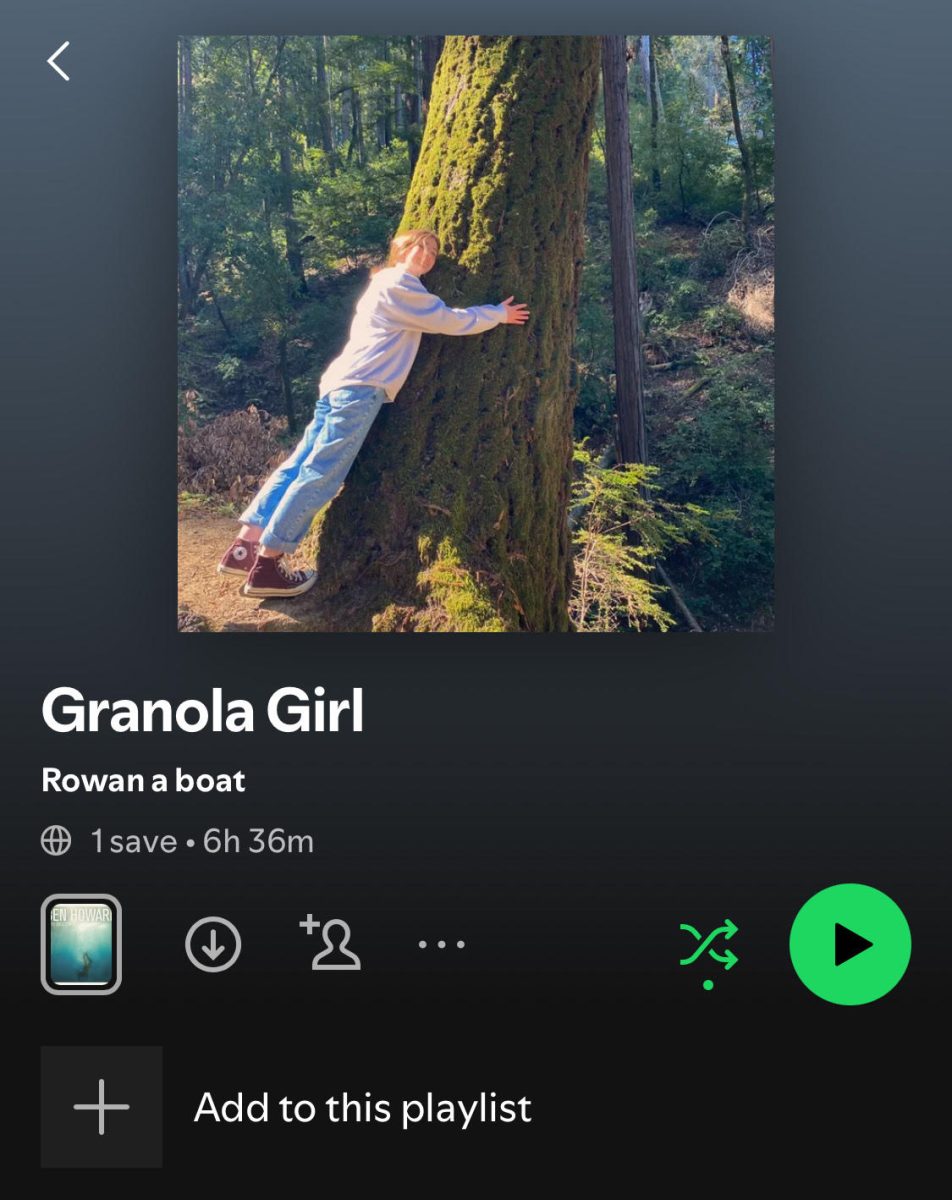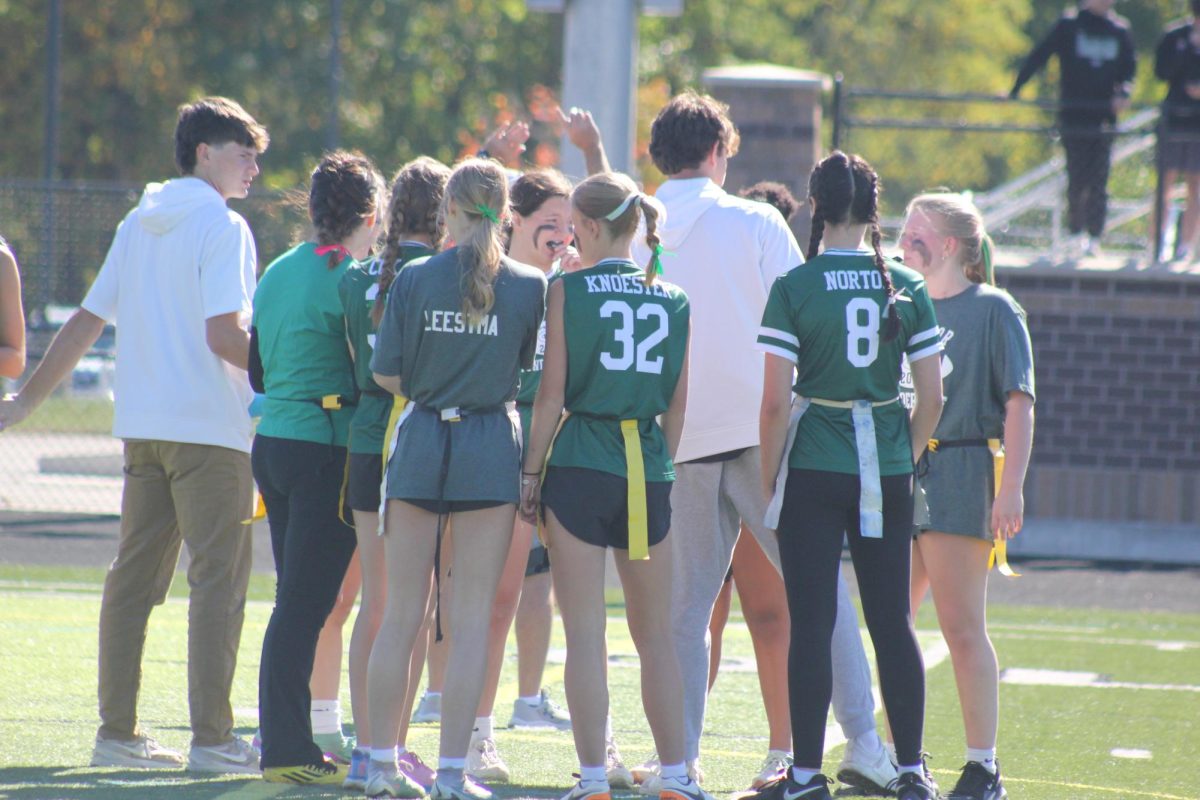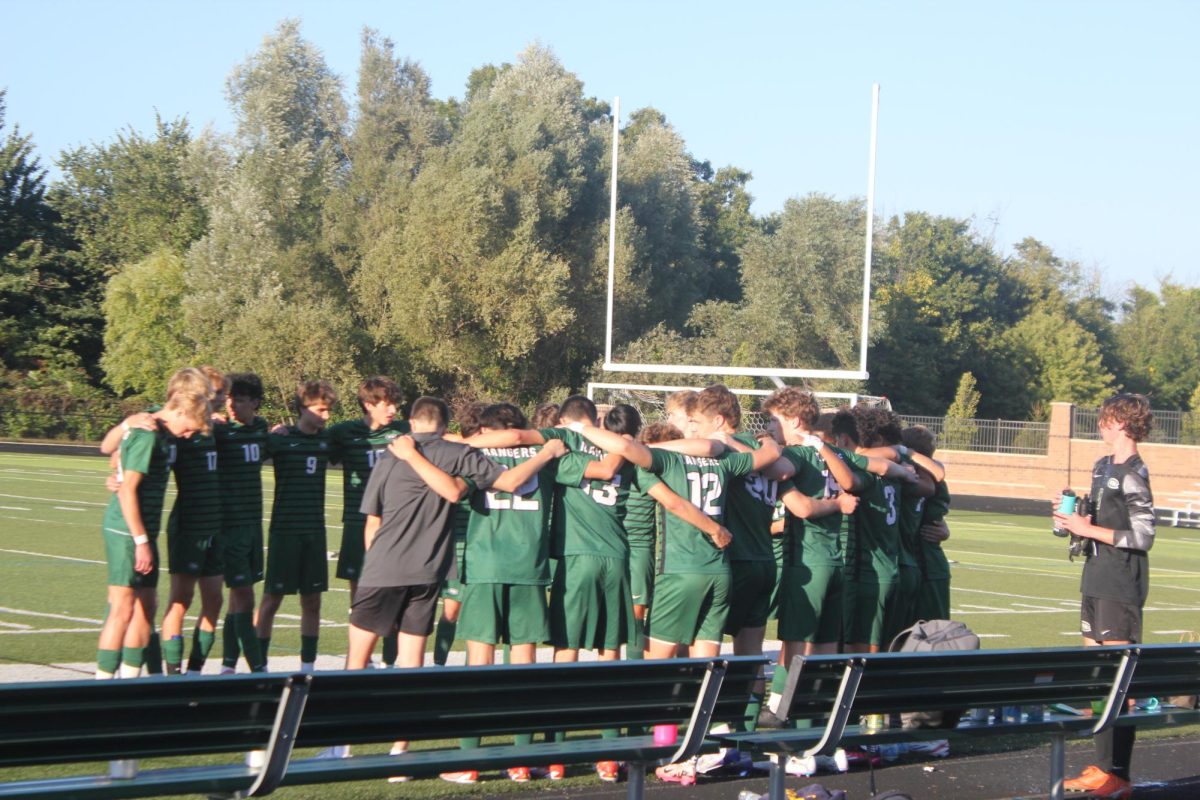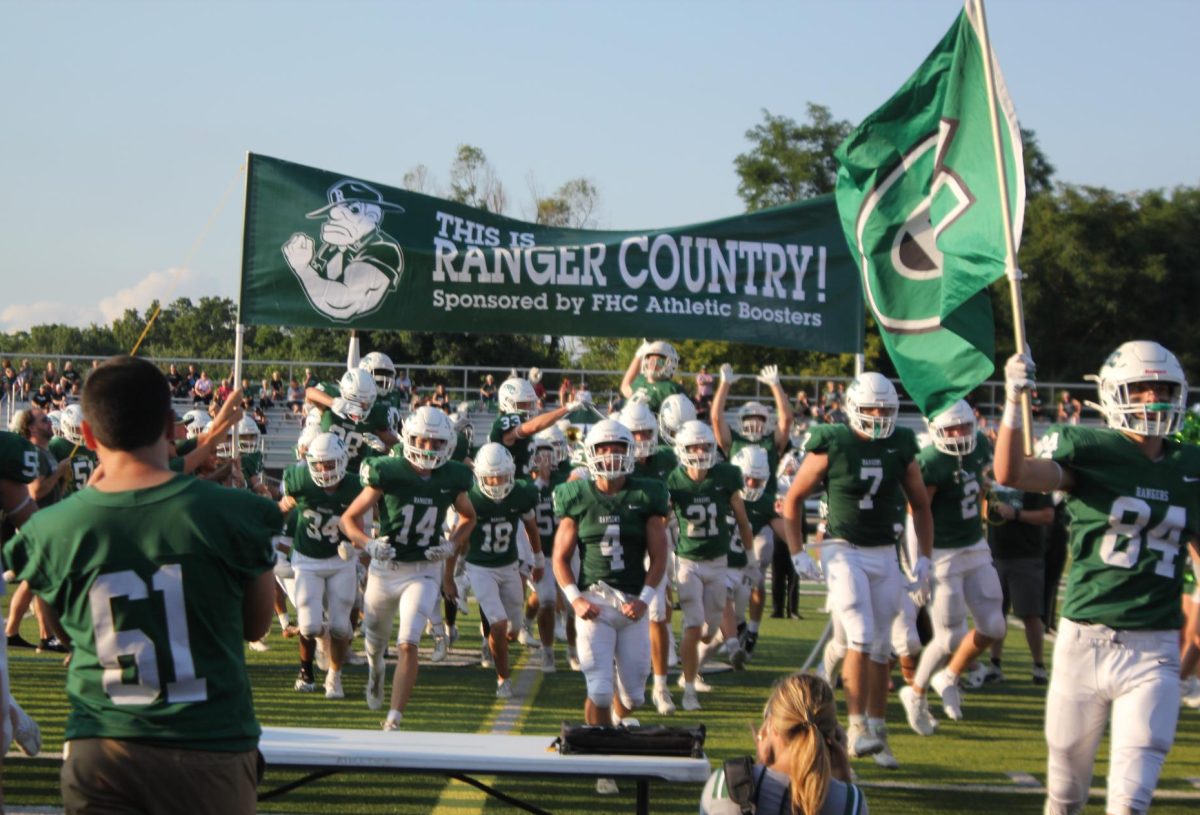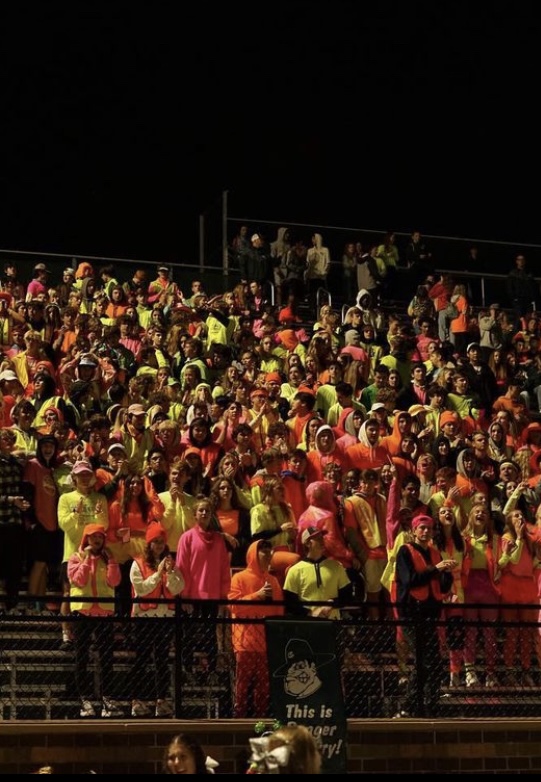How much longer do we have?
More stories from Lucas Thompson
@fhcstudentsection on Instagram
FHC’s lively student section earlier this fall before the surge in cases
Opinions expressed in editorials on The Central Trend are the view of the individual writer and are not the opinion of the entire staff of The Central Trend or the Forest Hills Central staff or administration.
Across all of America, schools came back into a typical school year with COVID-19 cases dropping. It’s now five months later, and the surge is back. Michigan is hit hard with the Omicron variant, and Kent County is one of the most affected counties.
Omicron has seemed to even make its way around FHC. Students around me are being taken out of class each day, and every seat around them is eradicated. This event raises the question: how much longer do we have before the district’s leaders take action to either put us into a hybrid schedule or entirely virtual?
According to the CDC, Omicron can be spread more quickly and more efficiently than previous COVID-19 strains, regardless of vaccination status.
The department states, “Current vaccines are expected to protect against severe illness, hospitalizations, and deaths due to infection with the Omicron variant. However, breakthrough infections in people who are fully vaccinated are likely to occur.”
It seems that the most significant issue throughout our school is the spread itself and not necessarily its effect on people. The virus spreads at a more substantial rate than the previous SARS-CoV-2 virus—the first variant we all grew to know and not love.
Science shows us exactly how masks and vaccines can help slow or stop the spread of the virus. It is up to the families at FHC to decide whether or not to believe the scientific evidence. We don’t know how to stop Omicron in its tracks directly, but that doesn’t mean we can’t help others by masking up, with or without symptoms.
Spectrum Health provides an image of Kent County cases and positivity rate; it is approaching 36%. Teachers have started once again mentioning the possibility of online learning. With winter upon us, numerous students will be inside, maskless, and the virus will thrive.
What will Ranger Country look like within just a month? What about a year? Will we get better or worse? All of these questions can be hypothesized about but not answered.
COVID-19 might be something we can’t get rid of. Instead, we may have to learn to suppress it and live with it.
We may never get back to “normal.” Rangers may have to create a new “normal.”
Hopefully, in future years, we can treat it like the flu and get the vaccine yearly to strengthen our immunity.
Living in a pandemic is no easy task for anyone, and it is the fear of isolation we all felt last year that keeps people wanting to go out like usual and forget that COVID-19 ever existed. Humans don’t like isolation, and many students hope to stay within a physical classroom rather than a Zoom call; a mask mandate may assist with our issue.
Students and staff want to stay in school, but some are not doing what is suggested to keep that luxury. I would not be surprised if the superintendent announces a hybrid or entirely virtual schedule with the surge of cases. Only we—as a school community—can prevent this from happening, FHC.
Do what has to be done for everyone in our community.

















